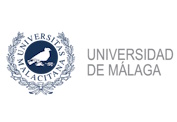PHY4 – Transceiver Models and Performance
Thursday, 5 June 2025, 16:00-17:30, room 1.E
Session Chair: Ana Garcia Armada (Univ. Carlos III de Madrid, ES)
A Non-Invasive Smart Sensing of Text Neck Syndrome Using SDR Technology
Abdul Basit Khattak (University of Oulu, Finland); Shujaat Ali Khan Tanoli (COMSATS University Islamabad, Attock Campus, Pakistan); Muhammad Bilal Khan (COSMATS University Islamabad, Attock Campus, United Arab Emirates & UAE University, United Arab Emirates); Ali Mustafa (COMSATS University Islamabad, Pakistan); Farman Ullah (United Arab Emirates University, United Arab Emirates); Daehan Kwak (Kean University, USA); Onel L. A. López (University of Oulu, Finland)
Smartphones are extensively used for communication, business, study, entertainment, and other purposes in everyone’s daily life. Unfortunately, using the smartphone for prolonged periods causes several problems. The development of a complicated cluster of clinical symptoms known as “text neck syndrome” may be linked to the improper usage of personal devices, especially mobile phones. In addition, typical postures while using mobile phone devices can cause musculoskeletal problems. Various technologies are being considered to keep track of health and identify problems unobtrusively. This paper employs software-defined radio (SDR) based RF sensing and machine learning (ML) algorithms to develop a testbed for detecting text neck syndrome and classifying healthy and unhealthy postures. Specifically, fine-grained orthogonal frequency division multiplex (OFDM) samples are leveraged for channel state information (CSI) acquisition for detecting neck tilt angles while using the mobile phone. For classification purposes, the ML algorithms are used, and their performance in terms of prediction speed, training time, and accuracy is assessed. The performance evaluation results of the testbed validated that this platform can faithfully detect and classify healthy and unhealthy postures with a maximum accuracy of 99.9% with fine kth-nearest neighbors (KNN). The developed testbed has a considerable clinical impact on improving human health.
Message Passing-Based Sparse Channel Estimation from Partially Coherent Measurement Vectors
Hamed Masoumi (TU Delft, The Netherlands); Nitin Jonathan Myers (Delft University of Technology, The Netherlands)
Phase jitter at oscillators in high-frequency wireless systems perturbs the phase of the acquired channel measurements. As a result, standard sparse channel estimation algorithms that ignore phase errors fail. In this paper, we consider a frame structure in which channel measurements are acquired over two packets. Our model assumes that the phase errors are nearly constant over a packet and they change considerably across the packets, leading to partially coherent channel measurements. In this paper, we develop a message-passing-based technique that leverages the partially coherent structure in the measurements for sparse channel estimation robust to unknown phase offset across the packets. Simulation results show that our approach achieves a lower mean-squared error in the reconstructed channel than comparable benchmarks.
Time Modulated Array and Time Variant Filter Techniques to Reduce Receiver Hardware Complexity and Power Consumption
Viswesh Kendae Ramkumar (University of Twente, The Netherlands); Basem Abdelaziz Abdelmagid (ETH Zürich, Switzerland); Harijot Singh Bindra (University of Twente, The Netherlands); Hua Wang (ETH Zurich, Switzerland); Eric Klumperink (University of Twente, The Netherlands)
Sustainability is a key goal for 6G, which focuses on minimizing the environmental impact of network operations through energy-efficient designs, agile architectures, and renewable energy sources. While traditional hardware is designed to optimize its performance with maximum functionalities to cover all possible scenarios, this often results in high system complexity. Therefore, scalable system performance with good power efficiency and moderate hardware complexity is key to 6G sustainability. This paper explores power reduction and performance/functionalities trade-offs combining two recently proposed time-variant CMOS radio receiver techniques: 1) a Time Modulated Array (TMA) technique that re-uses a single 4-element phased array to concurrently receive data streams from 5 different beam directions; 2) a time-interleaved Analog Finite Impulse Response Filter (AFIR) with embedded frequency translation realizing the selectivity to separate the 5 data streams. The aim of the paper is to assess the realistically achievable power and hardware complexity savings and relevant trade-offs with radio performance.
Energy Efficiency Vs Spectral Efficiency Tradeoff in MIMO Systems with Hardware Non-Linearities
Mohammad Parvini and Bitan Banerjee (Technische Universität Dresden, Germany); Muhammad Qurratulain Khan (NI, Germany & TU Dresden, Germany); Ahmad Nimr and Gerhard P. Fettweis (Technische Universität Dresden, Germany)
Massive multiple-input multiple-output (MIMO) technology is one of the pivotal enablers for future wireless communication systems that offer high spectral efficiency (SE) and reliability due to its increased array and diversity gains. However, energy efficiency (EE) and sustainability of the system is one of the crucial parameters for next-generation wireless networks, necessitating careful consideration of the SE vs. EE tradeoff. Accurate evaluation of a system’s EE requires a comprehensive end-to-end (E2E) model that accounts for practical hardware impairments, such as finite-resolution analog-to- digital converters (ADCs) / digital-to-analog converters (DACs) and non-linear power amplifiers (PAs), which degrade system performance. In this work, we develop an E2E model for MIMO-orthogonal frequency division multiplexing (OFDM) system with hybrid beamforming considering both the partially connected (PC) and fully connected (FC) architectures. The behavior of finite-resolution DACs and ADCs is characterized as additive quantization noise model (AQNM), while the behavior of PAs is characterized through the Bussgang decomposition. Our analysis offers valuable insights into the influence of DAC/ADC resolution and PA input back-off (IBO) on the EE of the system, highlighting key trade-offs and performance considerations for system design.
PAPR Reduction in Single Carrier Modulation with Hybrid Beamforming
Abdur Rahman Mohamed Ismail (University of Ghent, Belgium & IMEC, Belgium); Mamoun Guenach (Imec, Leuven & Alcatel Lucent, Belgium); Muteen Munawar (Ghent University & IMEC, Belgium); Andre Bourdoux (IMEC, Belgium); Heidi Steendam (Ghent University, Belgium)
Single carrier modulation with hybrid beamforming is a promising choice for sub-THz communication, thanks to its relaxed hardware requirements. However, the peak-to-average-power ratio (PAPR) of single carrier modulation in a multi-user MIMO scenario is still a concern. In this work, we develop a PAPR reduction technique for single carrier modulation operating with hybrid beamforming. We propose to add a PAPR reduction signal (PRS) to the precoded information symbols in the baseband. The design of PRS is written as an constrained optimization problem. An algorithm based on successive convex approximation is proposed to solve the optimization problem. Our analysis shows that by trading off only a little SINR, a considerable PAPR reduction can be achieved. Further, our simulations reveal that the proposed scheme achieves a significant performance gain compared to the classical single carrier system in the presence of power amplifier distortion.
Effects of Precoder Ordering on OFDM-SAGE Parametric Channel Estimation
Enrique T. R. Pinto and Markku Juntti (University of Oulu, Finland)
With the increasing interest in integrated sensing and communication (ISAC), parametric channel estimation (PCE) is progressively becoming an essential technique for communication systems. When prior information on the channel is available, it is possible to design pilots that improve PCE performance, which is highly beneficial for ISAC applications in directive mmWave and upper mid-band channels. In this work, we introduce an orthogonal frequency division multiplexing (OFDM) pilot design that accounts for the effects of Doppler, an often overlooked aspect. We show theoretically and numerically that the proposed pilot design provides significant improvement over an isotropic signal. We also show that multipath Doppler estimation is highly sensitive to the time distribution of energy delivered to each path.








